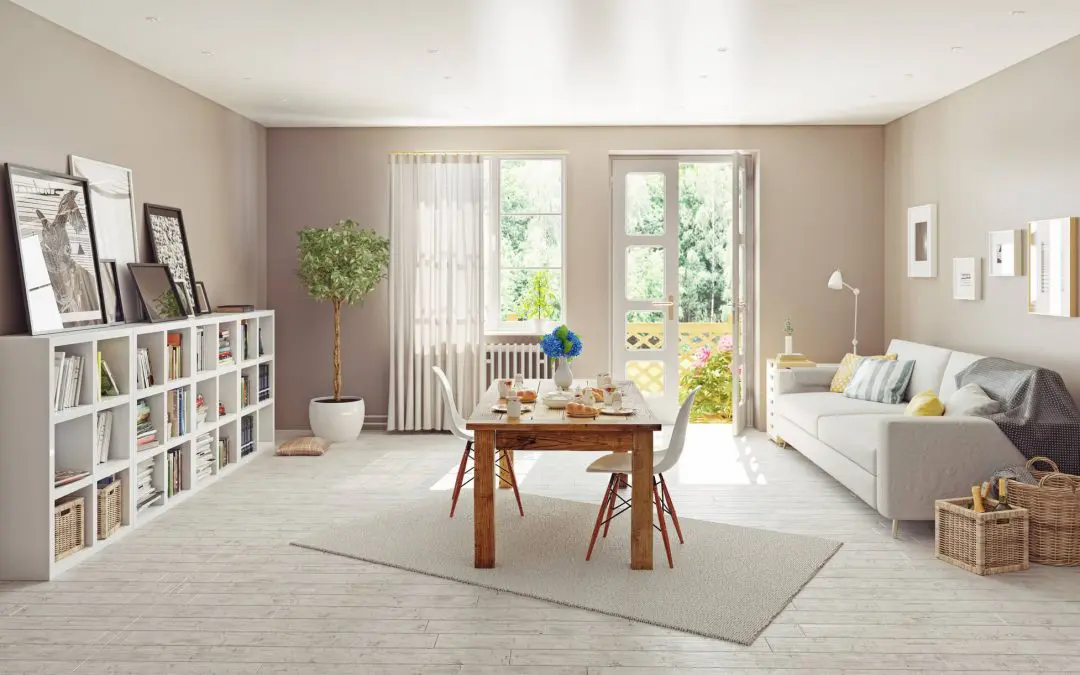Creating a beautiful and functional living space takes skill and finesse. Whether you’re starting from scratch or looking to refresh your current decor, these interior design tips will help you transform your home into a stylish sanctuary.
Embrace Natural Light in Your Interior Design
Natural light makes any space feel larger, warmer, and more inviting. Maximize the light in your home by keeping windows unobstructed and using sheer curtains that allow sunlight to filter through. Reflective surfaces like mirrors and glossy finishes can also enhance a room’s brightness.
Choose a Cohesive Color Palette
A well-chosen color palette sets the tone for your entire home. Start with a base of neutral colors and then layer in pops of color through accessories, artwork, and textiles. This approach allows for flexibility and makes it easy to update your decor without a complete overhaul. Consider the mood you want to create in each room: soft blues and greens for tranquility or bold reds and yellows for energy and warmth.
Focus on Functional Furniture
Furniture should be both stylish and functional. Invest in pieces that suit your lifestyle and meet your needs. Opt for multifunctional furniture like ottomans with storage, sofa beds, or extendable dining tables in smaller spaces. Ensure your furniture layout promotes good flow and conversation, avoiding cluttered or obstructed pathways.
Layer Textures and Patterns Throughout Your Interior Design
Various textures and patterns can bring depth and interest to your interior design. Mix and match materials such as wood, metal, glass, and textiles to create a rich, layered look. When incorporating patterns, start with a few key pieces like a patterned rug or throw pillows, and build from there, balancing bold prints with more subdued ones.
Incorporate Greenery
Plants are a simple yet effective way to breathe life into any room. They improve air quality and add a touch of nature that can be both calming and refreshing. Choose plants that suit the lighting conditions of your space and vary their sizes and shapes to create visual interest. Stylish planters and pots can also serve as decorative elements.
Personalize with Art and Accessories
Your home should reflect your personality and tastes. Personalize your space with artwork, photographs, and accessories that have meaning to you. Create a gallery wall with a mix of framed photos and art pieces, or display travel souvenirs and cherished mementos on shelves. These details make your home uniquely yours.
Pay Attention to Details
Small details can greatly impact the overall look and feel of your home. Pay attention to elements like lighting fixtures, hardware, and trim. Updating these details can modernize your space and tie the design together. For instance, switching out outdated light fixtures for sleek, contemporary designs can instantly elevate a room.
Keep it Clutter-Free
A clutter-free home is essential for both aesthetic and functional reasons. Regularly declutter and organize your spaces to maintain a sense of order and calm. Use storage solutions that blend seamlessly with your decor, such as built-in cabinets, decorative baskets, and stylish storage boxes.
Create Focal Points
Every room should have a focal point that draws the eye and anchors the space. This could be a statement piece of furniture, a striking piece of art, or an architectural feature like a fireplace. Arrange your furniture and decor to highlight this focal point, creating a balanced and harmonious look.
Interior Design Should Adapt to the Seasons
Adapt your decor to the changing seasons to keep your home feeling fresh and inviting. Swap out textiles like throw blankets and pillows for lighter or heavier fabrics as needed. Incorporate seasonal colors and decorations to celebrate the time of year, creating a dynamic and ever-evolving interior.
Interior design is a personal journey that should reflect your tastes, needs, and lifestyle. By embracing these tips, you can create a home that is beautiful, functional, and uniquely yours.
Interior Design FAQs
How do I choose the right paint color for a room?
When selecting paint colors, consider the room’s purpose and the mood you want to create. Test paint samples on your walls and observe how they look at different times of the day under various lighting conditions. Neutral colors are versatile and timeless, while bold colors can make a statement in accent areas.
What are the best ways to incorporate sustainable design into my home?
Sustainable design can be achieved by choosing eco-friendly materials, such as reclaimed wood, bamboo, and recycled metal. Opt for energy-efficient lighting and appliances. Buy second-hand furniture or upcycle old pieces to reduce waste. Additionally, supporting local artisans and businesses can contribute to sustainability.
How do I choose the right lighting for different rooms?
Consider the function of each room when choosing lighting. Use ambient lighting for general illumination, task lighting for specific activities (like reading or cooking), and accent lighting to highlight features (like artwork or architectural details). Dimmer switches can provide flexibility and control over lighting intensity.
How can I make a small room look larger?
To make a small room appear larger, use light colors on walls and ceilings to create an airy feel. Incorporate mirrors to reflect light and create the illusion of more space. Choose furniture that is appropriately scaled to the room and avoid clutter by utilizing smart storage solutions.
Esham Inspections provides home inspection services to the Eastern Shore of Maryland and Southern Delaware. Contact us to schedule an appointment.

